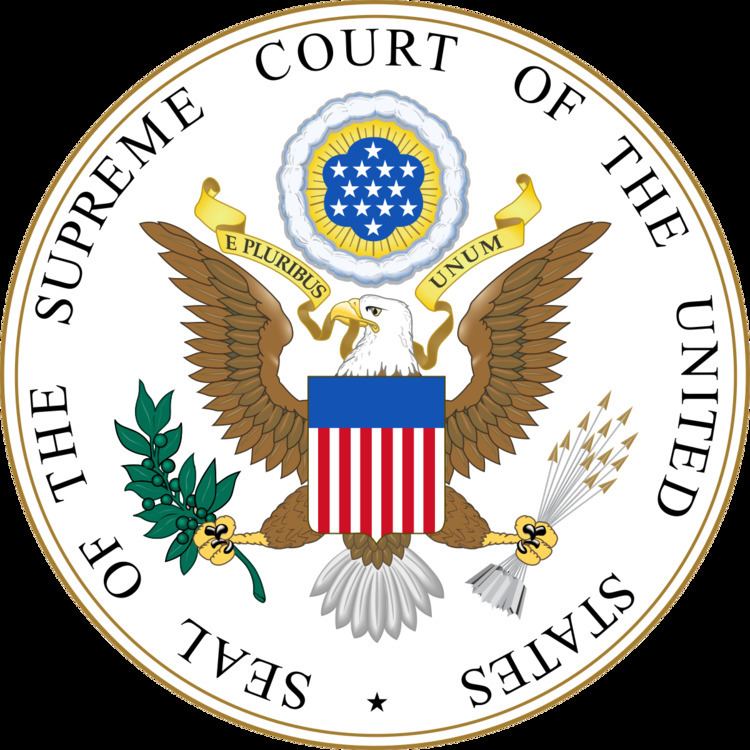 | ||
Associate Justices of the Supreme Court of the United States are the members of the Supreme Court of the United States other than the Chief Justice of the United States. The number of Associate Justices is determined by the United States Congress and is currently set at eight by the Judiciary Act of 1869.
Contents
Like the Chief Justice, Associate Justices are nominated by the President of the United States and are confirmed by the United States Senate by majority vote. This is provided for in Article II of the Constitution, which states that the President "shall nominate, and by and with the Advice and Consent of the Senate, shall appoint... Judges of the supreme Court." Although the Constitution refers to them as "Judges of the Supreme Court", the title actually used is "Associate Justice", introduced in the Judiciary Act of 1789. Associate justices were traditionally styled "Mr. Justice" in court opinions, but the title was shortened to "Justice" in 1980, a year before the first female justice was appointed.
Article III of the Constitution specifies that Associate Justices, and all other United States federal judges "shall hold their Offices during good Behavior". This language means that the appointments are effectively for life, and that, once confirmed, one's tenure of office ends only when a justice dies, retires, or is removed from office following impeachment by the House of Representatives and conviction by the Senate.
Each of the Justices of the Supreme Court has a single vote in deciding the cases argued before it; the Chief Justice's vote counts no more than that of any other Justice. However, in drafting opinions, the Chief Justice enjoys additional influence in case disposition if in the majority through his power to assign who writes the opinion. Otherwise, the senior justice in the majority assigns the writing of a decision. Furthermore, the Chief Justice leads the discussion of the case among the justices. The Chief Justice has certain administrative responsibilities that the other Justices do not and is paid slightly more ($255,500 per year for the Chief Justice and $244,400 per year for each Associate Justice).
Associate Justices have seniority by order of appointment, although the Chief Justice is always considered to be the most senior. If two justices are appointed on the same day, the older is designated the senior Justice of the two. Currently, the senior Associate Justice is Anthony Kennedy. By tradition, when the Justices are in conference deliberating the outcome of cases before the Court, the justices state their views in order of seniority. Also, under 28 USC 3, when the Chief Justice is unable to discharge his functions, or that office is vacant, his duties are carried out by the most senior Associate Justice until the disability or the vacancy ends.
Current Associate Justices
Currently, there are seven Associate Justices on the Court (the eighth position has been vacant since the February 13, 2016 death of Justice Antonin Scalia). The Justices, ordered by seniority, are:
Retired Associate Justices
When Justices retire, they have the opportunity to assume duties similar to the senior status assumed by District and Circuit Judges. This means that the Justice keeps his or her title, and may serve by assignment on panels of the U.S. Courts of Appeals, or even the US District Courts if so requested and assigned. Retired Justices may choose to keep a set of chambers in the Supreme Court building, as well as to employ law clerks. The names of retired Associate Justices continue to appear alongside those of the active Justices of the Court on the Bound Volumes of Supreme Court decisions. However, retired Associate Justices (unlike judges on senior status) take no part in the consideration or decision of any cases before their former court (the Supreme Court), although they may be appointed by the Chief Justice to sit on lower courts. When, after his resignation, William O. Douglas attempted to take a more active role than is usual for a retired associate justice, maintaining that he could assume senior status on the Court, he was admonished and rebuffed by Chief Justice Warren Burger.
Currently, there are three retired Associate Justices: Sandra Day O'Connor, who retired on January 31, 2006, David H. Souter, who retired on June 29, 2009, and John Paul Stevens, who retired on June 29, 2010. Both O'Connor and Souter occasionally serve on panels of the Courts of Appeals of various circuits. As of present, Stevens has chosen not to so serve.
List of Associate Justices
Since the Supreme Court was established in 1789, the following 100 persons have served as Associate Justice:
